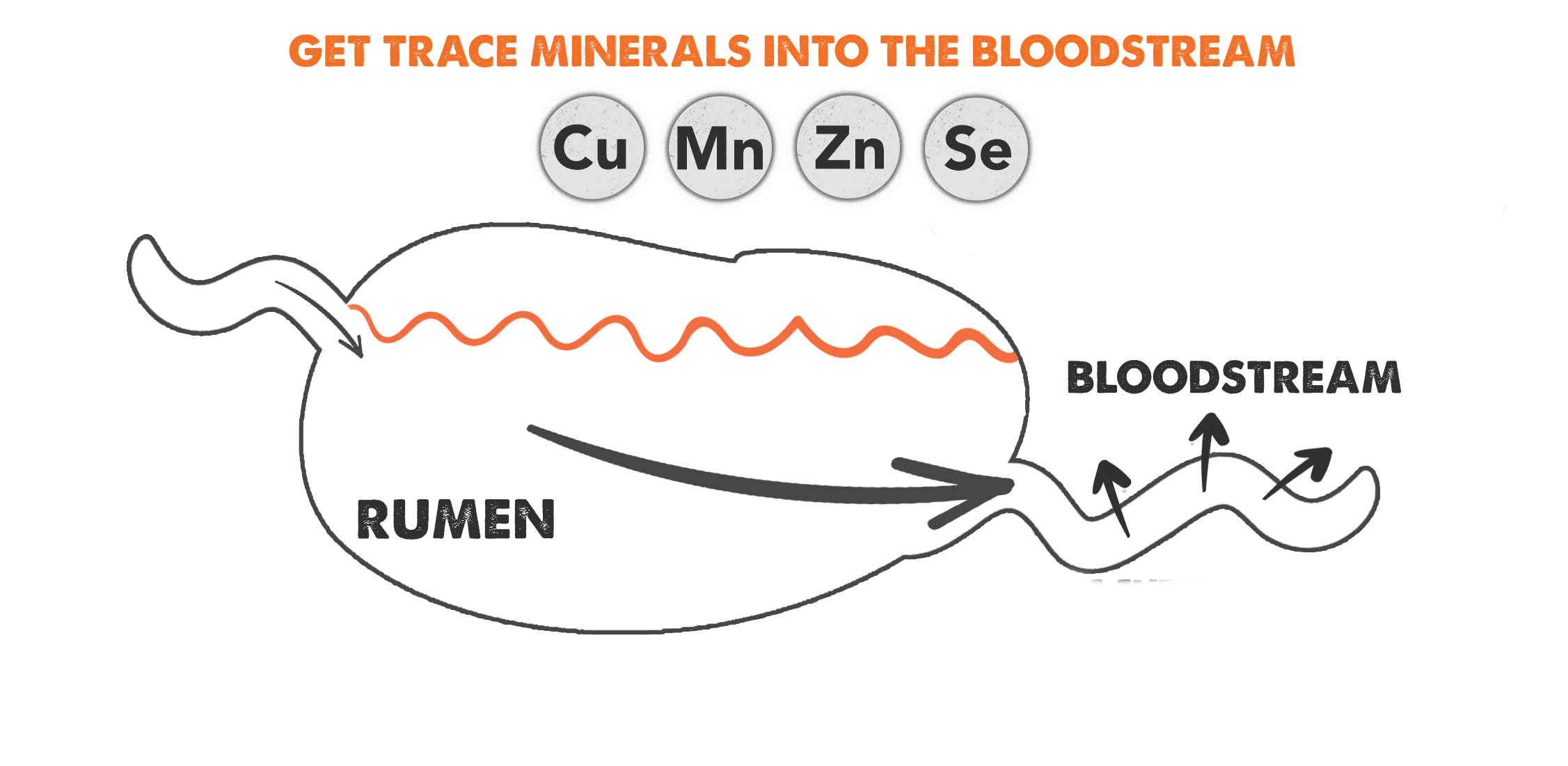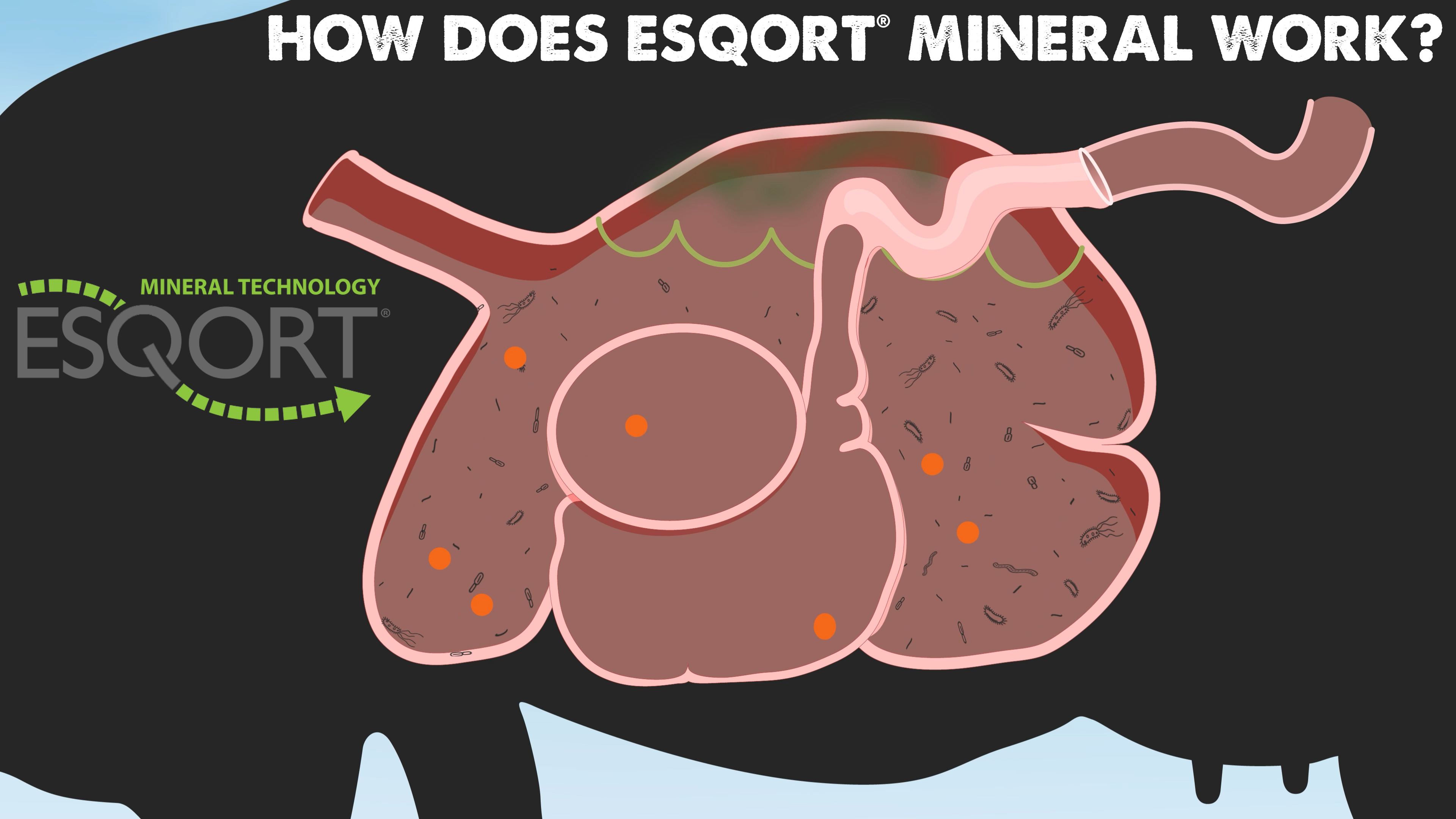Last updated on October 2nd, 2023 at 02:15 pm
Even without a drought, beef producers are always looking to cut costs. Drought turns that necessity into an essential that you cannot ignore.
Often, one of the easiest places to cut is vitamin and mineral supplementation. There are less expensive inorganic minerals on the market. Buying and feeding those products helps cut costs while making you feel good that you’re still providing essential cattle minerals to your herd.
Here’s why that may actually do the exact opposite of what you want to accomplish.
It starts with the cow's rumen...
The rumen is essentially a big fermentation vat. It’s a harsh environment in there; it must be able to break down the nutrients the cow consumes and put them in a soluble form. It’s in the small intestine, however, where those nutrients are absorbed across the cell wall and enter the bloodstream. There, they are transported throughout the body.
Inorganic (unprotected) minerals
Inorganic minerals, those with sulfate or oxide in the name, are easily broken down in the rumen. Once the compounds are separated, copper from the sulfate for example, the copper can be tied up by another mineral like molybdenum or iron. Molly and iron are among several cattle mineral antagonists that exist in water, soil, or the feed. They can render inorganic cattle mineral compounds less absorbable by the animal.
Here's why. The copper-molybdenum compound is too large to cross the cell wall in the small intestine. So rather than being absorbed into the bloodstream, the copper remains in the digestive tract. From there, it is rendered useless and ejected out the tailpipe in the manure.
Copper is one of several cattle trace minerals that are necessary for normal reproductive function and normal immune system function. Additionally, it impacts growth and weight gain. It’s also one of the trace cattle minerals that has a high rate of deficiency in herds across North America. Other necessary trace minerals include zinc, manganese, and selenium.
So, while inorganic cattle minerals are low cost for the manufacturer to produce and low cost for the beef producer to buy, they have low availability to the animal. They're harder for the animal to actually use.
Chelated (protected) minerals
Now let’s look at chelated or organic minerals. They are rumen bypass cattle minerals, much the same as rumen bypass protein. In both cases, the nutrients survive the harsh rumen environment and pass into the small intestine. That's where they then can be broken down into soluble forms that pass across the cell wall and into the blood stream.
Organic rumen bypass cattle minerals are bound to an organic molecule like amino acids or to a short-chain protein. Cattle minerals also come in a crystalline structure, which also resists being broken down in the rumen.

Consider copper again. In a chelated form, called copper propionate, the copper essentially has a protective coating that resists being broken apart in the higher pH environment in the rumen. Once it passes into the small intestine with a lower pH, it can be separated and the copper can pass into the blood stream.
Combatting cattle mineral deficiencies (like copper)
To determine how quickly a copper deficiency can be turned around with chelated and crystalline cattle minerals, the staff at Rio Nutrition did liver biopsy research work on 26 pregnant cows at their LiveLab facility. The cows were on a winter ration of hay, corn stalks, and 4 pounds of corn screenings per day.
The reason for doing a liver biopsy versus drawing blood is that serum is not the best sample for analysis, says Dr. Jefferey Hall, technical services veterinarian with Huvepharma and former director of the veterinary diagnostic lab and professor of toxicology and mineral nutrition at Utah State University.
“You can take groups of animals that are fairly severely copper deficient systemically, and their serum values may still be in the normal range. You can take animals that have excess copper and oftentimes their serum values are still in the normal range,” Hall says. “And so, serum's not a good indicator of copper status and it can be of questionable validity was zinc status as well.”
Liver biopsy results
The liver biopsies of the 26 cows showed an average copper concentration of 146 ppm. Nineteen days later, the cows were given free choice access to Riomax® tubs. Fifteen days after being on Riomax®, the cows were biopsied again. The analysis showed a 37% increase at 200 ppm.
“We performed our final liver biopsy trial on the cows 42 days after being on the Riomax® tubs. And their average was 332 ppm, a 128% increase,” says Jamie Diener, who heads up the LiveLab for Rio Nutrition.
Beyond that, nine of the 26 cows showed a clinical deficiency for copper, with an average of 30 ppm. “So we took those nine and biopsied them seven days after being on Riomax® tubs,” Diener says. “And they came up with an average of 69 ppm, which was a 132% increase”... in only seven days!
What's in your cattle mineral?
Every Riomax® formula contains the Esqort® mineral package, which contains 100% rumen-bypass key trace cattle minerals, both chelated and in crystalline form. That allows the cattle minerals to go through the rumen without being metabolized into something that can’t be used by the animal.
“Oftentimes, people talk about mineral supplementation as being a hidden, haunted problem. Because if you quit supplementing with minerals and vitamins, you’re going to end up in a problem that is not something you see on an everyday basis when you look at the cattle,” Hall says. “It a hidden nightmare waiting to jump up and bite you.” But it doesn't have to be.



